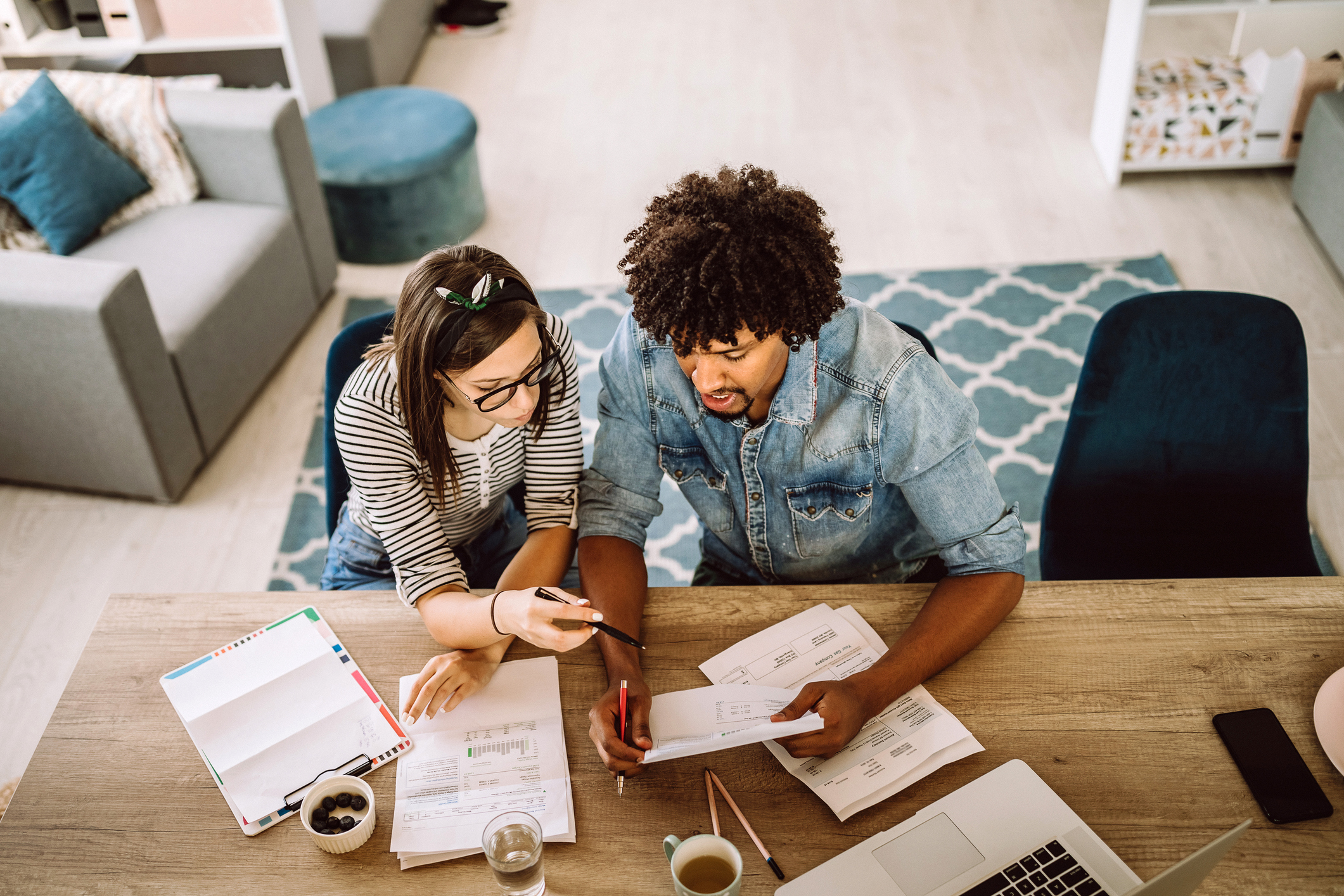Are your finances keeping you up at night? You're not alone. Almost three-quarters of adults say money has them feeling stressed, according to the American Psychological Association. That's not surprising, especially in today's economy with skyrocketing energy and food costs, tepid investment performance and rising unemployment rates.
The remedy? Tackle that tension with a budget.
If the mere mention of the "b" word raised your blood pressure, take a deep breath and consider this: Budgeting is simply a way to make sure you have enough money to reach your goals.
From just $107.88 $24.99 for Kiplinger Personal Finance
Become a smarter, better informed investor. Subscribe from just $107.88 $24.99, plus get up to 4 Special Issues

Sign up for Kiplinger’s Free Newsletters
Profit and prosper with the best of expert advice on investing, taxes, retirement, personal finance and more - straight to your e-mail.
Profit and prosper with the best of expert advice - straight to your e-mail.
A budget isn't constricting. It sets you free. When you have a plan, know how much money you have and where it's going, you don't have to worry about it. Knowledge really is power.
Here are the five basic steps to building a budget that'll put your mind at ease. It'll take a bit of time and effort, but it's well worth it.
1. Take inventory
Before you can make a plan, you need to know how much money you have and where you spend it.
For at least one month, track all your expenses. And not just the biggies like your rent payment and grocery bill. Make a note of smaller purchases, too, especially cash purchases that may not show up on your bank or credit card statement. You can carry a small notebook to jot them down, or collect every receipt and toss them in a shoebox when you get home to sort through once a week.
You should also make note of large annual expenses, even if they don't happen to fall in the month you're tracking. For example, if you usually pay $600 every six months for car insurance, jot down $100 this month for that cost.
2. Make a diagnosis
At the end of the month, examine your spending habits and look for red flags. Organizing your purchases into categories -- such as housing, transportation, clothing, entertainment, food, dining out, etc. -- will help.
This exercise can be eye opening. When I did this with my expenses, I found that I was spending almost as much on "quick trips" to the grocery store each month as I was on my main weekly shopping trip. You may discover you've been spending too much time at the coffee shop, or that you didn't save a single penny for a rainy day.
(Or you may find that your finances are doing just fine and that you had no reason to worry. Good for you.)
3. Put your eyes on the prize
What are your financial goals? Perhaps you'd like to get out of debt, buy a new car, take a vacation or simply stop living paycheck to paycheck. If you have a specific goal, you know there will be a reward for taking the time to create –- and follow -- a budget.
4. Cut costs and boost income
This isn't so painful when you stay focused on your goal. Look at the problem areas you identified in step two and find ways to fix them. For example, if you found that dining out was eating away too much money, take your lunch to work instead of eating at restaurants. That act alone could save about $100 a month.
That's money you can use to pay down debt, save toward something you want or use as a cushion for rising gas and food costs. Almost everyone has fat they can cut from their spending. See Save Money on Practically Everything for simple ways to trim thousands of dollars of dollars on food, utilities, entertainment, investing and more.
One problem you may need to address: You simply need more money. Start by checking your tax withholding. If you receive a tax refund every year (and most of you do), file a new W-4 form with your employer to get you more money each month, instead of in one big chunk when you file your tax return. Use our easy withholding calculator to help you figure out what to put on the form.
If your expenses and goals drastically exceed your income, you may need to take more dramatic action. For example, getting a part-time job on nights or weekends, selling your car and using public transportation, getting a roommate to cover housing costs, moving to a cheaper city or even moving back in with Mom and Dad. (Find out more ways to live rent-free.) Again, remind yourself of your goal to motivate yourself to do the right thing. Sacrifices today can add up to big rewards tomorrow.
5. Stick with the plan
There's not just one way to budget. Some people choose to do all their spending with a debit card so they can monitor their spending through their online bank statements. Others go the opposite route and stick strictly to cash. They place fixed amounts of money into envelopes for each spending category -- and when the money's gone for the month, no more spending.
You could even join an online community, such as Wesabe.com, to track your expenses and get feedback and support from other users. Or put your goals on autopilot -- arranging with your bank to make automatic contributions from your checking account to your savings or investments each month. (See Ten Sneaky Saving Strategies for more tips.)
The key is to make your budget personal. Find a method that works for you, and consistently monitor your progress. You'll soon find your stress replaced by confidence -- and you'll rest easier, too.
Profit and prosper with the best of Kiplinger's advice on investing, taxes, retirement, personal finance and much more. Delivered daily. Enter your email in the box and click Sign Me Up.

-
 It's Beginning to Look a Lot Like a Santa Rally: Stock Market Today
It's Beginning to Look a Lot Like a Santa Rally: Stock Market TodayInvestors, traders and speculators are beginning to like the looks of a potential year-end rally.
-
 The 2026 Retirement Catch-Up Curveball: What High Earners Over 50 Need to Know Now
The 2026 Retirement Catch-Up Curveball: What High Earners Over 50 Need to Know NowUnlock the secrets of the 2026 retirement catch-up provisions: A must-read for high earners aged 50 and above.
-
 How Much a $100K Jumbo CD Earns You
How Much a $100K Jumbo CD Earns YouYou might be surprised at how fast a jumbo CD helps you reach your goals.
-
 I Need to Cut $1,000 From My Monthly Budget, and I've Already Given Up Starbucks and Dining Out. What Else Can I Do?
I Need to Cut $1,000 From My Monthly Budget, and I've Already Given Up Starbucks and Dining Out. What Else Can I Do?Here are some creative ways to save up to $1,000 a month, even if you feel like you've already made all of the obvious cuts.
-
 I'm a Government Employee and Need to Get By Until the Shutdown Ends. What Can I Do?
I'm a Government Employee and Need to Get By Until the Shutdown Ends. What Can I Do?The second-longest shutdown in history is leaving many federal workers with bills due and no paycheck to cover them. Here's what you can do to get by.
-
 What Does Medicare Not Cover? Eight Things You Should Know
What Does Medicare Not Cover? Eight Things You Should KnowMedicare Part A and Part B leave gaps in your healthcare coverage. But Medicare Advantage has problems, too.
-
 The 50-30-20 Budget Rule: A Simple Way to Save Money
The 50-30-20 Budget Rule: A Simple Way to Save MoneySaving Using the 50-30-20 budget rule is an easy way to save. It helps you prioritize saving while paying off debt.
-
 Four Smart Steps To Take Before Buying Your First Home
Four Smart Steps To Take Before Buying Your First Homehome Buying your first home can be daunting. Here are four things you need to do years before you start house-hunting to prepare financially for the biggest purchase of your life.
-
 'Food Tax': Which States Still Tax Groceries in 2025?
'Food Tax': Which States Still Tax Groceries in 2025?State Tax Ten states still tax groceries, but that figure is shrinking.
-
 How Our Family Fights Inflation
How Our Family Fights InflationBudgeting Millennials typically spend more than other generations on certain expenses that have been increasing most rapidly. Here are some tips to cut your losses.
-
 Gas Prices Around the World
Gas Prices Around the WorldBudgeting Many world gas prices can make what Americans pay at the pump seem like a bargain. But not all.
